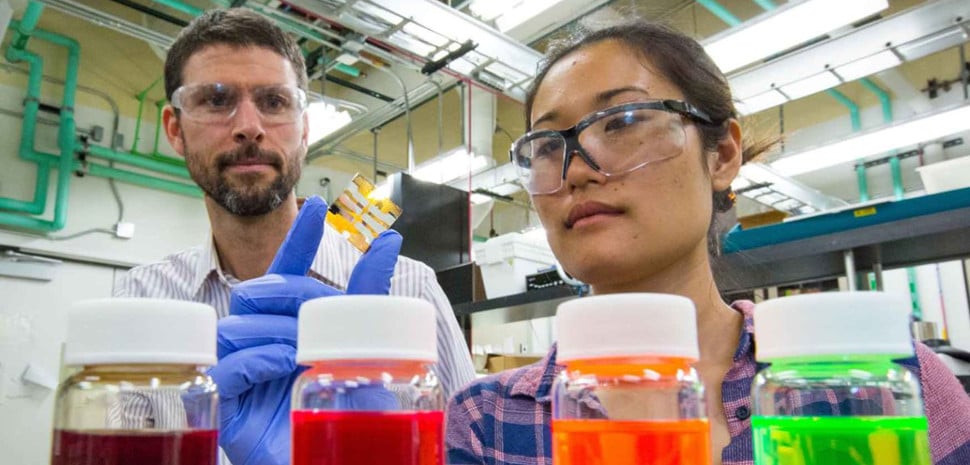Scientists from the Lawrence Berkeley National Laboratory in California have discovered a particular shade of blue could boost building energy efficiency in sunny climates by keeping walls and rooftops cool, and also increase the output of certain types of solar cell, through strong infra-red emissions.
The researchers measured the temperature of surfaces coated in the color, known as Egyptian blue and derived from calcium copper silicate, and though it is already known photons absorbed by the material can be emitted in the near-infrared range, the new research demonstrated the effect could be 10 times stronger than previously thought, with the material able to emit as many photons as it absorbs.
This, Berkeley researchers theorize, could lead to applications in building integrated PV, such as solar windows tinted with the blue, and transparent cells tuned to absorb the near infrared part of the light spectrum.
The discovery, outlined in the paper High quantum yield of the Egyptian blue family of infrared phosphors (MCuSi4O10, M = Ca, Sr, Ba), and published in the Journal of Applied Physics, could add more colors to the palette of architects and building owners, who for aesthetic reasons tend to stay away from the whites and grays that offer the best cooling properties.
Painting with perovskites
Another solar discovery this week came from the U.S. National Renewable Energy Laboratory, which has developed a perovskite based ‘ink’, which can be painted on to a substrate, creating an active solar cell.
Though the cells produced using the ink at this stage are very small, and do not produce a lot of power, NREL’s David Moore says the discovery could allow manufacturers to eliminate complex deposition processes and high temperatures from solar production, greatly reducing costs.
“You can’t make silicon panels fast enough to get to that demand,” said Moore, referring to an anticipated demand for 25 TW of new power capacity in the next 30-50 years. “But if you can roll stuff out on presses, then you could. Getting to a roll-to-roll manufacturing process would solve the speed problem. The most likely way to do that would be [through using] wet ink.”
If such a process were commercialized, manufacturers would be able to apply the perovskite ink to a glass substrate, in a roll-to-roll process similar to the way newspapers are produced. NREL researchers also visualize application directly, as a paint.
“The day may come when a crew shows up to your house, sprays the metallic contact layer onto an outside wall and, when that’s dry, applies the perovskite ink,” states an NREL release publicizing the research.
This content is protected by copyright and may not be reused. If you want to cooperate with us and would like to reuse some of our content, please contact: editors@pv-magazine.com.









By submitting this form you agree to pv magazine using your data for the purposes of publishing your comment.
Your personal data will only be disclosed or otherwise transmitted to third parties for the purposes of spam filtering or if this is necessary for technical maintenance of the website. Any other transfer to third parties will not take place unless this is justified on the basis of applicable data protection regulations or if pv magazine is legally obliged to do so.
You may revoke this consent at any time with effect for the future, in which case your personal data will be deleted immediately. Otherwise, your data will be deleted if pv magazine has processed your request or the purpose of data storage is fulfilled.
Further information on data privacy can be found in our Data Protection Policy.